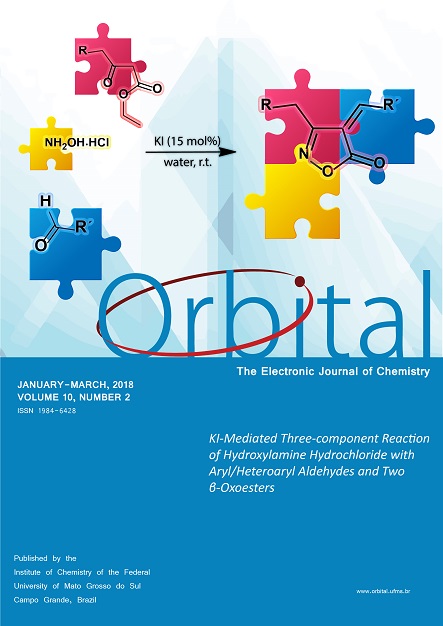- energy tobacco,
- factorial planning,
- fatty acids,
- biodiesel,
- catalyst
- temperature ...More
Copyright (c) 2018 Orbital: The Electronic Journal of Chemistry

This work is licensed under a Creative Commons Attribution-NonCommercial-NoDerivatives 4.0 International License.
Abstract
The production of biodiesel from energy tobacco as an alternative fuel source is discussed herein. Biodiesel was obtained through the transesterification of tobacco seed oil using CH3ONa as an alkaline catalyst. Full factorial design was used in these studies to determine the best operating conditions. The independent variables were oil/methanol molar ratio, temperature and catalyst loading. The tobacco oil was analyzed by gas chromatography, and the fatty acids present in the highest concentrations were linoleic, oleic and palmitic acids, which made up 74.16, 11.80 and 8.62% of the oil, respectively. Some physicochemical characteristics of this oil were determined: acid value 3.7 mg g-1 KOH, iodine value 144.74 g 10-2 g -1 I2 and saponification index 190.66 mg g-1 KOH. Subsequently, biodiesel was produced from this oil with a conversion > 97% using the optimized conditions, which were a temperature of 70 °C, an oil/methanol molar ratio of 1: 4 or 1: 8 and a catalyst loading of 2%.


